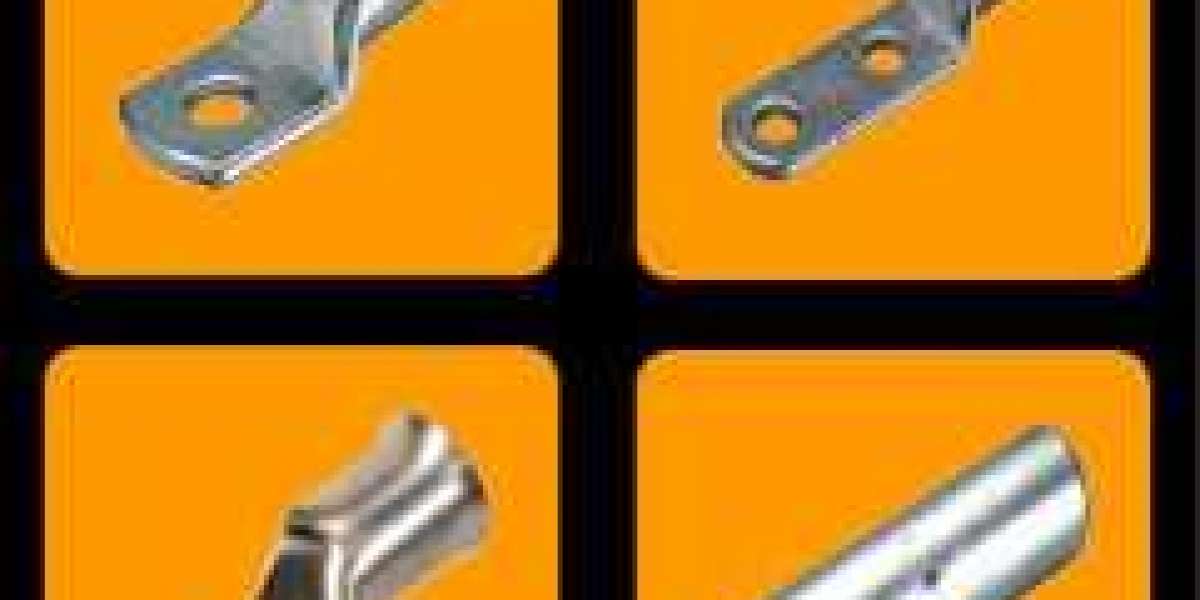In the world of electrical engineering and power distribution, ensuring reliable and efficient connections is paramount. One crucial component that plays a vital role in achieving this is the copper cable lug. Often overlooked, these small yet significant devices are essential for creating secure and conductive connections between cables and electrical equipment. This blog will delve into the importance of copper cable lugs, their applications, and best practices for their use.
What Are Copper Cable Lugs?
Copper cable lugs are metal connectors that are designed to terminate or connect copper conductors to electrical equipment. They come in various shapes and sizes, tailored to fit different cable types and sizes. The primary purpose of these lugs is to provide a secure and efficient electrical connection, ensuring that current can flow freely without resistance or loss of energy. Their construction from copper ensures high conductivity, making them a preferred choice in many applications.
The Importance of Copper Cable Lugs
High Conductivity
Copper is well-known for its excellent conductivity, making it the ideal choice for cable lugs. This high conductivity ensures that electrical energy can flow with minimal resistance, reducing energy losses. When cables are terminated using copper lugs, the efficiency of the entire electrical system improves, which is particularly important in high-load applications such as power plants and industrial settings.
Durability and Corrosion Resistance
Copper cable lugs are designed to withstand harsh environmental conditions. They are often plated with materials such as tin or nickel to enhance their resistance to corrosion. This durability ensures that connections remain reliable over time, reducing the risk of failures that could lead to costly downtime or safety hazards. Properly installed copper cable lugs can last for decades, making them a cost-effective solution in the long run.
Mechanical Strength
The mechanical strength of copper cable lugs is another critical factor. They provide a robust connection that can withstand vibration, thermal expansion, and contraction, which are common in electrical systems. This mechanical integrity prevents loosening or disconnection over time, ensuring a stable electrical connection even in dynamic environments.
Ease of Installation
Copper cable lugs are designed for ease of installation. They can be crimped, soldered, or bolted to cables and equipment, allowing for versatility in various applications. The straightforward installation process reduces labor costs and time, making them a popular choice among electricians and engineers.
Safety
Electrical safety is paramount in any installation. Copper cable lugs contribute to safety by ensuring secure connections that reduce the risk of arcing, overheating, or electrical fires. A poor connection can lead to excessive heat buildup, which is a fire hazard. Using high-quality copper lugs helps mitigate these risks, promoting safer electrical systems.
Applications of Copper Cable Lugs
Copper cable lugs find applications in various sectors, including:
- Industrial Equipment: Used to connect motors, transformers, and other heavy machinery where high current flows are involved.
- Renewable Energy Systems: Essential for solar panel installations and wind turbines, where reliable connections are critical for performance.
- Power Distribution: Widely used in substations and electrical panels for connecting conductors to busbars and other components.
- Residential Wiring: Utilized in home electrical systems to connect wires to breakers and service panels.
Best Practices for Using Copper Cable Lugs
To maximize the benefits of copper cable lugs, consider the following best practices:
Select the Right Size: Choosing the appropriate size of copper lug is crucial. Lugs that are too small can lead to overheating, while those that are too large may not create a secure connection.
Ensure Proper Installation: Follow manufacturer guidelines for installation. Whether crimping or bolting, ensure that the connection is tight and secure to prevent future issues.
Regular Inspection: Periodically inspect connections for signs of wear, corrosion, or loosening. Early detection of issues can prevent larger problems down the line.
Use Quality Products: Invest in high-quality copper cable lugs from reputable manufacturers. Poor-quality lugs may not provide the necessary conductivity or durability.
Conclusion
Copper cable lugs are an essential component in electrical connections, providing high conductivity, mechanical strength, and durability. Their significance extends across various applications, from industrial machinery to renewable energy systems. By understanding their importance and adhering to best practices for installation and maintenance, engineers and electricians can ensure reliable and safe electrical systems. As technology continues to advance, the role of copper cable lugs will remain critical in achieving efficient and effective electrical connections.









